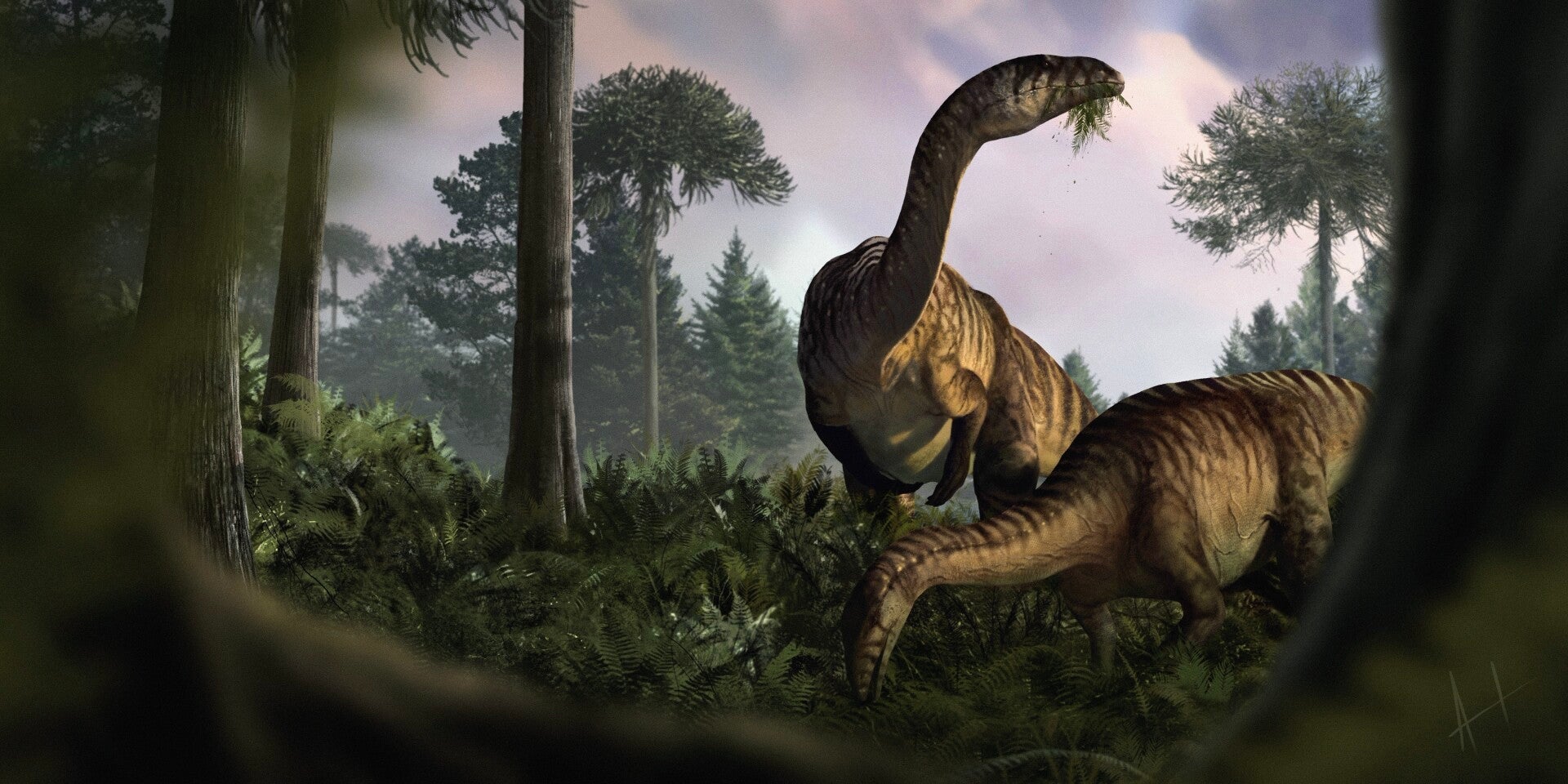

In December 2024, I had the honor of creating the cover illustration for one of the world’s most prestigious scientific journals, Nature (issue dated December 12, 2024).
This particular issue featured a groundbreaking paleontological article focused on the rise of dinosaurs in Poland—specifically, from a region not far from where I live. That personal connection made this project not only a professional milestone, but also a deeply meaningful experience.

covering nature
The commission came at an unexpected moment—while I was traveling, waiting for a delayed flight at an airport, without access to my usual workspace or tools.
Despite the challenging circumstances, I completed the illustration in Procreateon an iPad, during several hours of layover.
What began as an improvised solution turned into a published cover, representing one of the most widely read and discussed paleontological articles of 2024.
The cover artwork depicts two early sauropodomorph dinosaurs, herbivorous forms from the Early Jurassic period.
One animal is peacefully feeding on ferns, while the other is captured in the act of regurgitating its stomach contents—a visual reference to regurgitalites, or fossilized vomit, which were one of the key trace fossils analyzed in the article.
The surrounding vegetation is based on paleobotanical data from southern Poland, reflecting a humid, temperate ecosystem dominated by ferns, horsetails, and early gymnosperms.
The atmospheric lighting and subdued color palette are intended to evoke the transitional character of the Early Jurassic—an era of ecological instability and rapid evolutionary change that provided opportunities for dinosaurian expansion.
a study that reshapes our understanding of dinosaur evolution
The article, titled "Digestive contents and food webs record the advent of dinosaur supremacy" (Nature 636, pp. 397–403), was authored by an international team of paleontologists led by Grzegorz Niedźwiedzki—with whom I had the pleasure of collaborating on this project. Our partnership resulted in both the internal illustrations for the article and the journal’s cover image, which visualized its central themes for a global readership.
The study analyzed hundreds of fossilized digestive traces—including coprolites (fossilized dung), cololites (intestinal contents), and regurgitalites—recovered from Early Jurassic and Late Triassic deposits in southern Poland. Using advanced techniques such as synchrotron microtomography, the team was able to reconstruct in remarkable detail the diets and trophic relationships of various vertebrate groups from this time period.
Key findings of the study include:
-
Dinosaur dominance was a gradual ecological process, not a sudden event. The transition unfolded over approximately 30 million years, through a series of stepwise expansions and ecological displacements.
-
Dietary flexibility was crucial to the success of early dinosaurs. The analyzed digestive remains showed a wide range of feeding strategies—from carnivory and insectivory to omnivory and herbivory—suggesting adaptive versatility during periods of environmental stress and change.
-
The data enabled the reconstruction of ancient food webs, offering unprecedented insight into how dinosaur-dominated ecosystems emerged and replaced older faunal communities.

What made this project particularly significant to me was its geographical and scientific proximity. I live near the Świętokrzyskie region in Poland, close to the fossil localities from which many of the analyzed specimens originated.
To contribute to a visual representation of this research—knowing it arose from terrain so familiar—was a unique and humbling experience.
This project also highlights the importance of collaboration between science and illustration.
Paleoart, when grounded in scientific evidence and supported by direct dialogue with researchers, has the power to communicate complex discoveries in a way that is accessible, evocative, and intellectually engaging to both specialists and the public alike.
